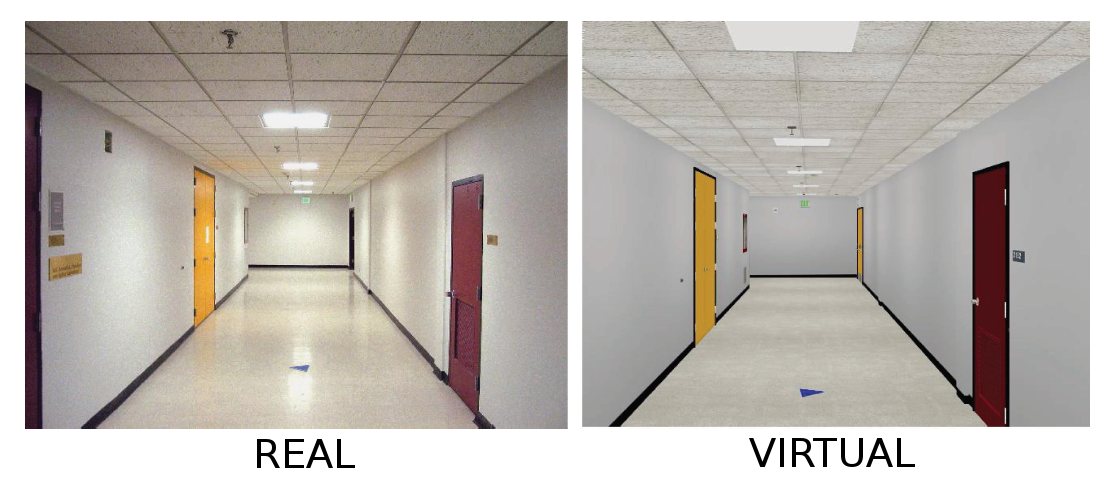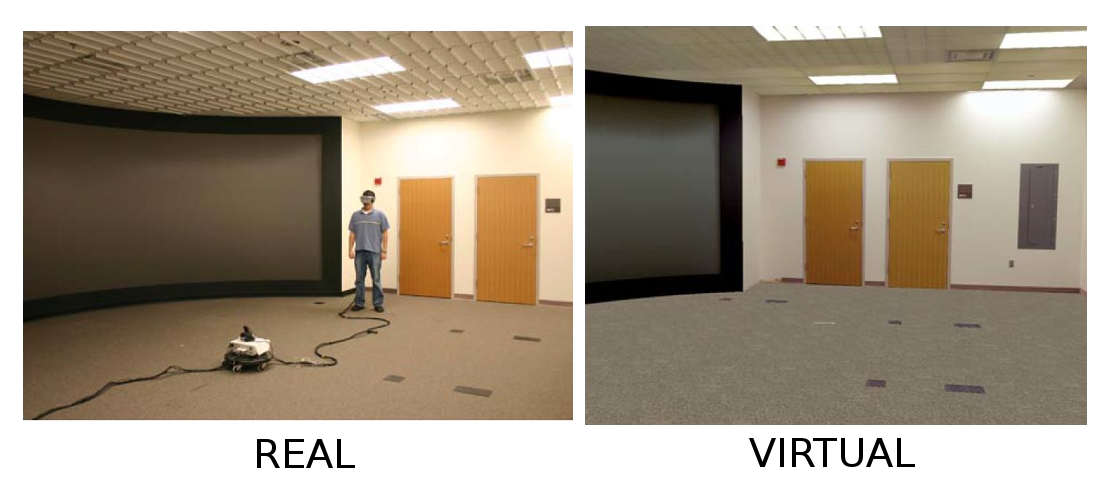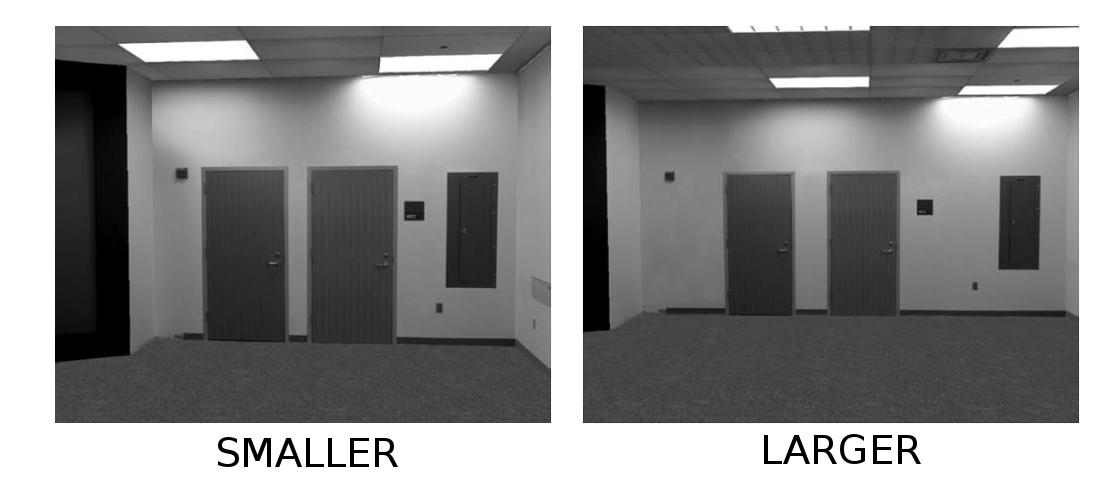Two studies, both using head mounted displays and realistic environments, seem to have conflicting findings regarding distance estimation in virtual environments.
Sahm et al (2005) find that distance estimations in the real and virtual worlds, measured via blind walking and blind throwing, exhibit consistent and significant underestimates of about 30%. They use a realistic virtual environment meant to reproduce the physical experiment environment, like so:
In two papers by Interrante et al (2006, 2008), no significant difference is found between distance estimations measured by blind walking in the real or virtual world. They use a similar realistic environment that reproduces the physical environment:
And in the later study, they also test an enlarged and shrunken version of the virutal environment (moving the wall in or out 10%, while leaving objects like doors the same size):
They find no significant difference real and same-sized virtual world estimations; they see a significant effect in the larger virtual rooms, and a marginally significant effect in the smaller. Both resized rooms cause underestimations. This suggests that some kinds of inaccurate reproduction of (or better: deviation from?) the real world either induce distance underestimation, or prevent whatever state of sync between mental models of the virtual and physical worlds participants otherwise may have entered. Also weird that neither resized case saw distance over-estimation, only under-.
But of key interest for this post: why did one group see distance under-estimation, and the other not? This may be an interesting area of investigation — are there cues present in the one environment, but not in the other? For instance, depth cues: The hallway presents a fairly strong horizon cue, while the room may not. Or, is it a “realism” cue, some technique of lighting or texture handling or any other minute rendering detail? Is it specific inaccuracies in the modeling of the spaces — both were hand-made (or, in the resized case, edited), so some inaccuracies are likely inevitable. There may be some artistry in choosing where those inaccuracies are allowed to fall (and perhaps the smaller rooms in the resized case saw a marginal effect because they chose “better” — and perhaps implying a relationship between exocentric and egocentric distance estimation?) Or is it some lower-level perceptual difference; the Sahm hallway has strong black outlines separating walls from floor, where the Interrante room has a significantly darker floor. The specifics are unclear, but their respective studies’ results suggest that some difference in the environments may be responsible for the reuse (or more accurate application?) of real-world rules or models.
It may be worth keeping an eye out for how these sorts of environments are constructed elsewhere in the literature.
references:
- Interrante, V., Ries, B., & Anderson, L. (2006, March). Distance perception in immersive virtual environments, revisited. In Virtual Reality Conference, 2006 (pp. 3-10). IEEE.
- Interrante, V., Ries, B., Lindquist, J., Kaeding, M., & Anderson, L. (2008). Elucidating factors that can facilitate veridical spatial perception in immersive virtual environments. Presence: Teleoperators and Virtual Environments, 17(2), 176-198.
- Sahm, C. S., Creem-Regehr, S. H., Thompson, W. B., & Willemsen, P. (2005). Throwing versus walking as indicators of distance perception in similar real and virtual environments. ACM Transactions on Applied Perception (TAP), 2(1), 35-45.



